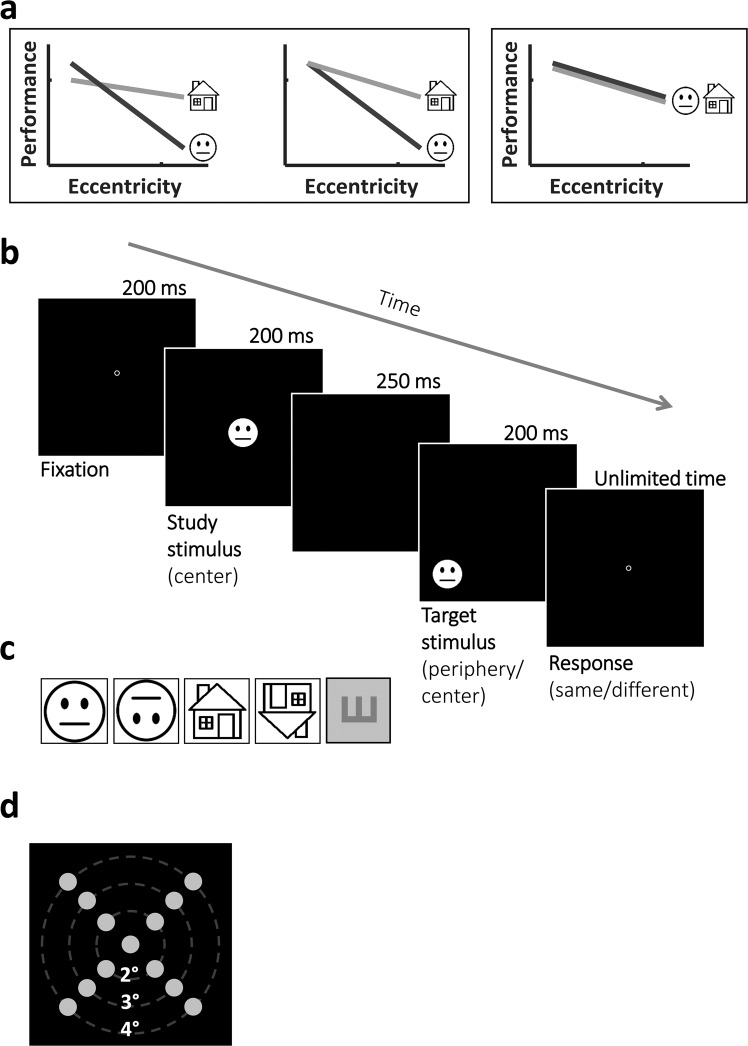Figure 1.
Predicted outcomes and experimental design. (a) Proposed models for face and place-related processing as would be reflected in face and house discrimination performance across parafoveal eccentricities. Left and middle panels – both house and face discrimination are affected by eccentricity but to a different extent. Due to possible between-categories task difficulty differences, we cannot compare central performance of houses and faces (e.g. left panel) and therefore the middle panel presents hypothesized normalized performance for each category. These panels predict that house discrimination would be less affected by eccentricity than faces, i.e. showing less reduction in performance across parafoveal eccentricities. Right - face discrimination would not show superiority to house discrimination at any parafoveal location. (b) Representative timeline of a face discrimination “same” trial at 4° eccentricity (left lower visual field). Each trial started with a fixation circle appearing for 200 ms followed by a central study face appearing for 200 ms, and after a 250 ms ISI a target face appeared for 200 ms in 1 of 13 randomly chosen locations at central or parafoveal eccentricities (see panel d). The participant’s task was to report if the target face was the same as (“same” condition) or different than (“different” condition) the study face. (c) The 4 different category discrimination experiments (see Methods for stimulus details) and the ‘VA’ tumbling E experiment (see Supp. Mat. for the E discrimination experiment details). Note that the experimental stimuli were of real faces and of real houses and are fully described in the Methods section and the ones depicted here are for illustration only. (d) The 13 possible locations for the target stimuli in the category discrimination experiments (see panel c). In each discrimination experiment there were 50 trials in each location (25 “same”, and 25 “different” trials). In the ‘VA’ tumbling E experiment we only tested performance at central, 2° and 4° eccentricity locations, overall 9 locations (see Methods for more details).

